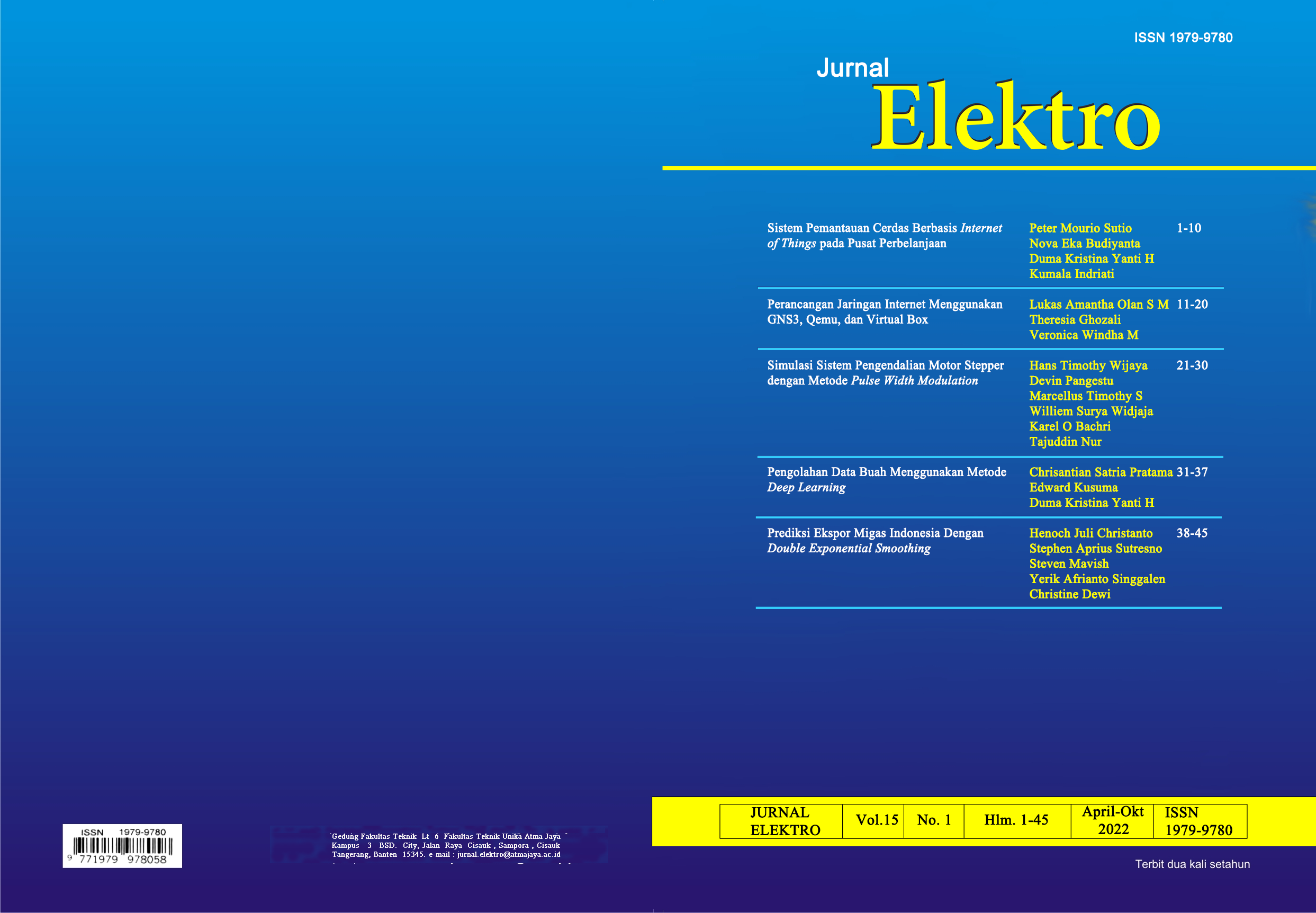Simulasi Sistem Pengendalian Motor Stepper dengan Metode Pulse Width Modulation
DOI:
https://doi.org/10.25170/jurnalelektro.v15i1.5120Keywords:
Astable Multivibrator, Controller, PWM, Microcontroller, Stepper Motor, SimulationAbstract
This paper discusses the control of a stepper motor using Pulse Width Modulation (PWM) methods. In this paper, the author presents two designs: one using a stepper motor controller with an astable multivibrator as a pulse generator and the other utilizing a microcontroller as the pulse generator. The design of the stepper motor controller with an astable multivibrator involves using the IC timer 555 to control the stepper motor speed and a latch circuit to control the direction of the stepper motor rotation. Meanwhile, the design of the stepper motor controller with a microcontroller employs the Arduino UNO R3 to control both the direction and speed of the stepper motor. Testing is conducted through a simulation of the system design using Proteus software. From the test results, it is observed that an increase in the PWM value leads to a faster rotation speed of the stepper motor, conversely, a decrease in PWM value results in a slower rotation speed of the stepper motor.
References
M. E. Utomo, B. Rahmat dan E. Rijanto, “Desain dan Implementasi Kontrol Kecepatan Mode Sinus Motor Stepper Menggunakan Mikrokontroler Atmega8,” Fakultas Teknik Elektro Universitas Telkom, 2018.
Andalanelektro.id, “Skema Rangkaian Pengatur Putaran dan Kecepatan Motor Stepper Beserta Cara Kerjanya,” 2019. [Online]. Available: https://www.andalanelektro.id/2019/10/skema-rangkaian-pengatur-putaran-dan-kecepatan-motor-stepper-serta-cara-kerjanya.html. [Diakses 18 10 2021].
D. Kho, “Pengertian PWM (Pulse Width Modulation atau Modulasi Lebar Pulsa),” [Online]. Available: https://teknikelektronika.com/pengertian-pwm-pulse-width-modulation-atau-modulasi-lebar-pulsa/. [Diakses 18 10 2021].
E. Tutorials, “555 Oscilator Tutorial,” [Online]. Available: https://www.electronics-tutorials.ws/waveforms/555_oscillator.html. [Diakses 18 10 2021].
N. Barru, “Pengertian, Perbedaan, Fungsi, Kelebihan Mikrokontroler dan Arduino,” 2020. [Online]. Available: https://naufalbarru.com/pengertian-perbedaan-fungsi-kelebihan-mikrokontroler-dan-arduino/. [Diakses 17 10 2021].
Elprocus, “What is a Stepper Motor : Types & Its Working,” [Online]. Available: www.elprocus.com/stepper-motor-types-advantages-applications/. [Diakses 18 10 2021].
D. Kho, “Pengertian Multivibrator Astabil (Astable Multivibrator) dan Cara Kerjanya,” [Online]. Available: https://teknikelektronika.com/pengertian-multivibrator-astabil-astable-multivibrator-cara-kerjanya/. [Diakses 11 10 2021].



